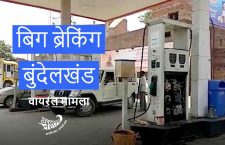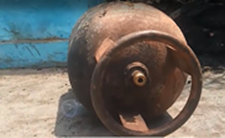Decreasing groundwater levels and an administration bent on quick-fix solutions. A village in Chitrakoot becomes symptomatic of the gap between policy-making and policy-executing.
It was nine years ago when a special package was brainstormed over and put together, as a specific strategy to tackle and/or mitigate drought in high-risk zones, particularly the Bundelkhand region of Uttar Pradesh and Madhya Pradesh. Based on a report drafted by the Central Team under the aegis of the Government of India, packages were sanctioned to be implemented over a period of three years.
This 2009 landmark executive decision has since been invoked by all major political parties in Uttar Pradesh, whenever Bundelkhand is the subject of discussion, usually at the time of elections and campaigning. Every player of rajneeti in the state and every Chief Minister, be it Dalit-centric Mayawati, youth-centric Akhilesh Yadav, or cow-centric Yogi Adityanath, has appealed to the Bundeli voter, hands folded, with promises of a never-before-seen Bundelkhand package.
In 2018, the Bundeli voter in the small village of Nandin Kurmiyan in the district of Chitrakoot in U.P.’s Bundelkhand, has yet to see any of these benefits trickle down to her, or her local handpump.
Ramkali, a resident of Nandin Kurmiyan walks “koson-bhar” she says to get water for her house, ever since the hand pumps have given up – from a miserable trickle in recent times to nought. Radha Devi, lists out how crucial water is, almost matter-of-factly – “eating, cleaning, washing clothes, drinking” – before sharing with us on the waiting time. Yet another teenaged girl in the hinterland spending all her waking hours queued up, buckets of water in hand.
Earlier this year, the pradhan of Rampur village, also in Chitrakoot, while speaking of the water crisis in his gaon, had told us that the wells and handpumps had witnessed a drop in water levels, even though further boring had been done. The local M.L.A. had declared, in response, how his administration would find water “even if it dipped to below 400 feet”, a silly statement masquerading as super-heroic, we’d thought then. Especially since the ground realities on water levels in Bundelkhand, especially in regions that have been marked ‘Dark Zones’ since 2008, have been in clear opposition to establishment findings, such as BDO reports that had claimed around this time last year that the water levels had gone up by 8 metres.
Suresh Chandra, the village development officer, explains that the fixing of tubewells has resulted in an overall drop in groundwater levels. Extreme measures have been resorted to, he says, “Boring has been done. We deployed those big machines, but it has not been successful here.”
Chandra cites the two-word solution that has been the only proposed solution in Nandin Kurmiyan thus far – the proposed solution that’s also been medley executed, and hence marked as successful i.e. They’re called water tankers.
– Pooja Pande
First published in The Wire.


